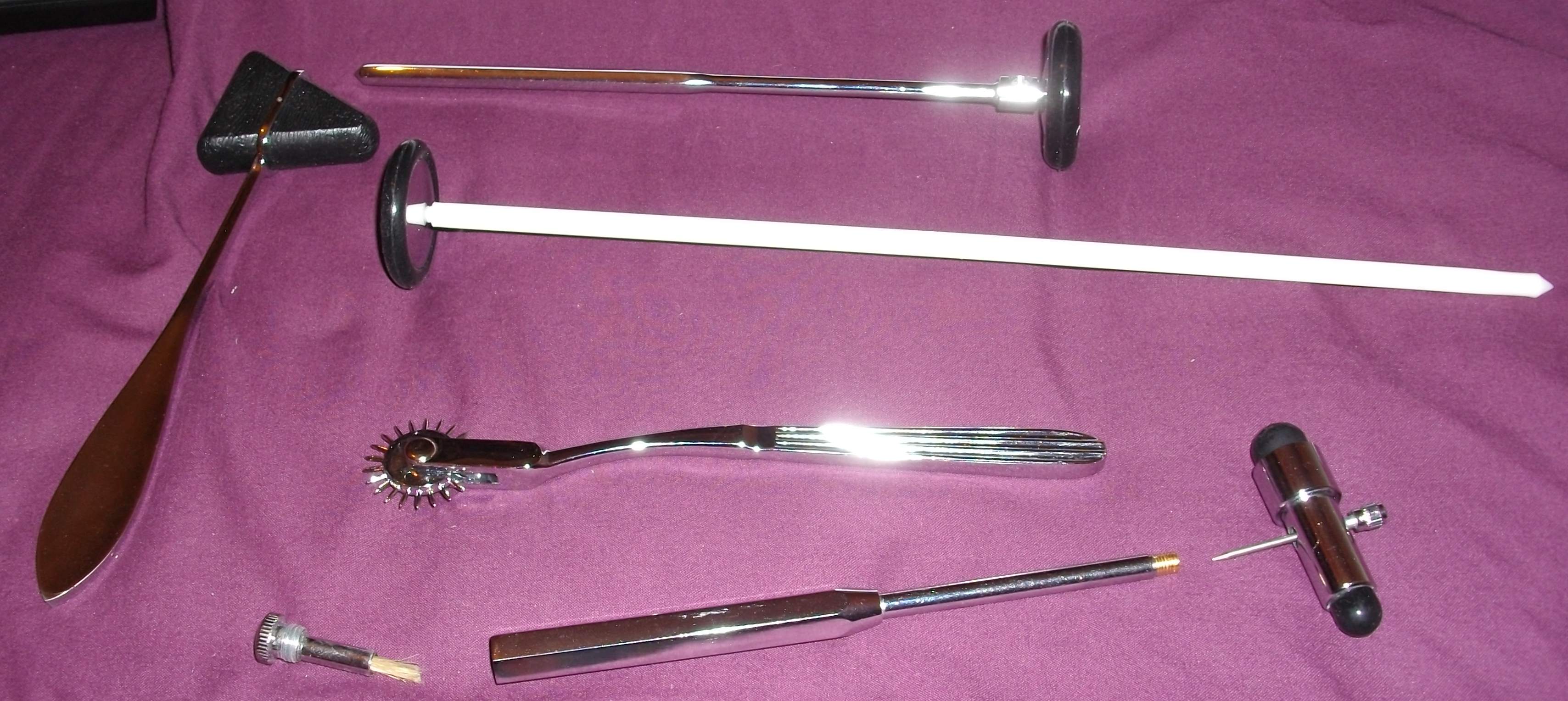 |
| Assorted neurological physical exam tools |
What I didn't realize when I picked the title of the blog was how exciting I would find neurology. The brain and spinal cord are composed of complicated neural pathways that each carry particular types of information. One part of the spinal cord carries sensory input about temperature. Another part of the spinal cord carries directions that go to muscles. Another part carries sensory input about proprioception, the position of the parts of the body in space. The pathways each travel a confusing and unique course, wending this way and that as they traverse the spinal cord and the regions of the brain.
When something goes wrong (for example, a patient loses the ability to look upwards), the neurologist must visualize the various neural pathways to reason through where the problem lies. Upon identifying the physical location of the lesion, he also must figure out what caused the lesion in the first place. Was it a stroke? A tumor? An infectious disease? Neurology has a reputation of being highly intellectual and of requiring studiousness, cleverness, organization, and careful thought. I think it suits my personality better than most fields.
As with most medical students, I am constantly testing the waters of different specialties to see which I like the most (and which I like the least). No longer will I reflexively rule neurology out.